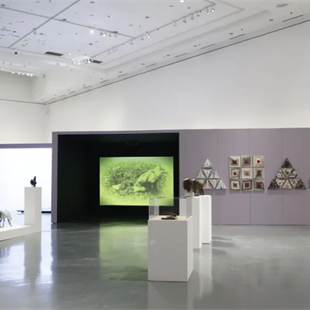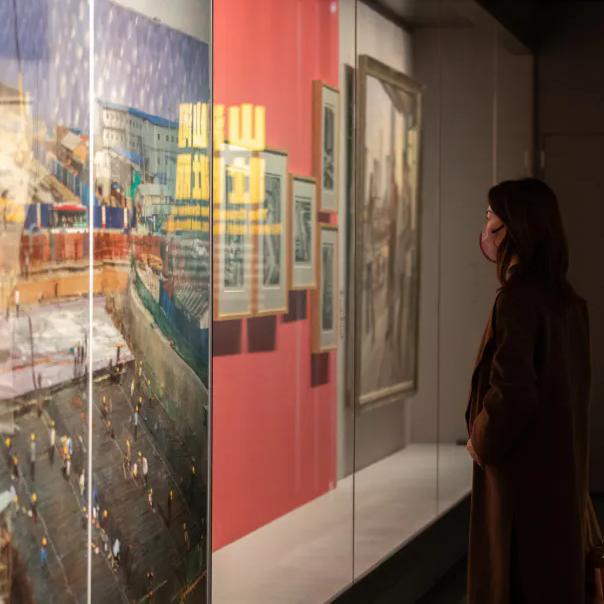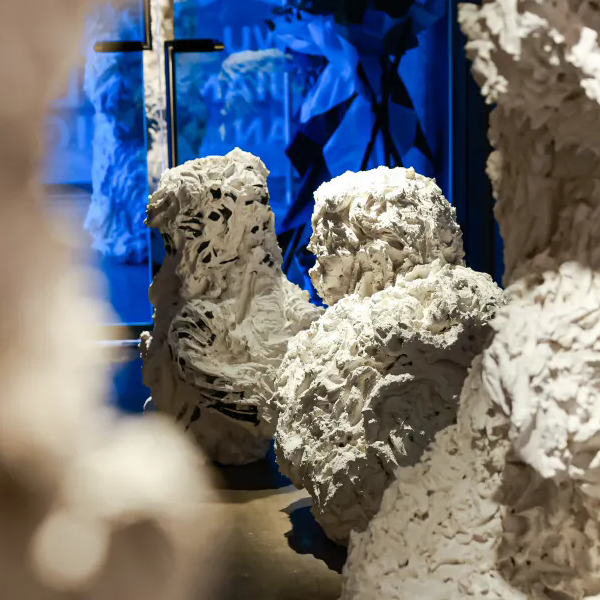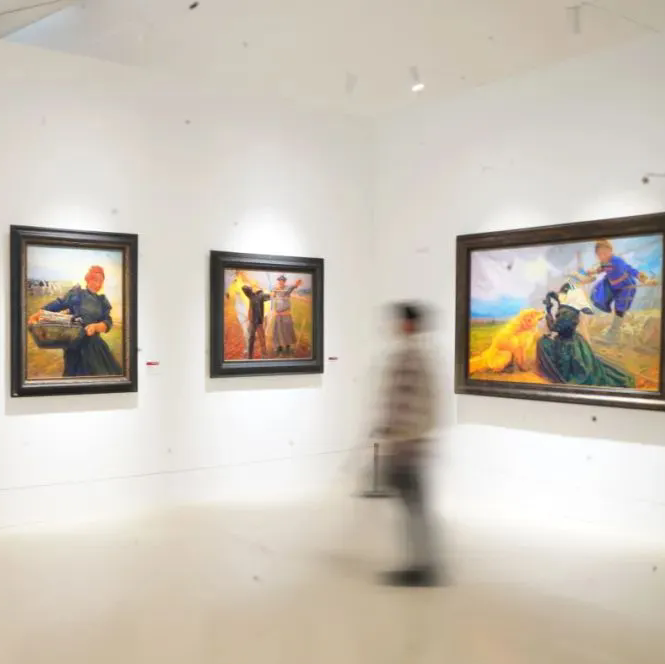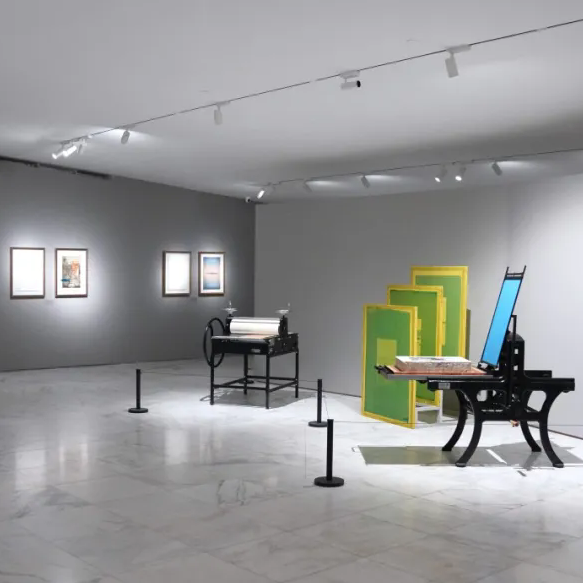
Liu Xiaodong- Self-Portrait, 2010; oil on canvas, 38x33cm
A solo show of Liu Xiaodong works was successfully presented at UCCA in 2010, Hometown Boy exhibiting at the Eslite Gallery, Taipei runs from December 17th, 2011 through to January 15th, 2012. Liu Xiaodong returned to his hometown Jincheng in Liaoning Province to spend three months painting his family and childhood friends while documenting the experience with diary entries, sketches and photographs. In addition to the 20 new paintings and over 200 pages of diary entries on display, the exhibition also features a documentary about Liu Xiaodong’s homecoming by famed Taiwanese director Hou Hsiao-Hsien, who won the Award for Best Documentary at the Taipei Golden Horse Film Festival. Through painting, writing and film, Hometown Boy offers an unusually panoramic view of Liu Xiaodong’s Jincheng memories, past and present.
When Liu Xiaodong left his hometown as an aspiring 17-year-old art student, Jincheng was a bustling little town where life revolved around the local paper mill. Three decades later, the physical, social and economic landscape has drastically changed: Jincheng’s narrow streets and houses remain, but the local economy has crumbled, unemployment is rampant, and years of environmental degradation have taken their toll. For the artist, it is a homecoming in which observations and depictions of the present are tinged with recollections of a vanished past.
Courtesy of the artist, all rights reserved.

The documentary about Liu Xiaodong’s homecoming
Foreword by Liu Xiaodong
This time, I’ve decided, I’m really going home.
In 1980, when I was seventeen, I left my hometown of Jincheng to study in Beijing, where I’ve been working ever since. Every Chinese New Year for the last thirty years, I’ve gone back to Jincheng for the holiday. I usually meet up with a few childhood friends and we drink, eat and have fun together. All of them still live there. Some are factory workers, while others have been laid off.

Liu Xiaodong-The House Where I Grew up, 2010; oil on canvas, 150x400cm

Liu Xiaodong-Li Wu Works the Night Shift and Still Can't Sleep By Day, 2010; oil on canvas, 150x140cm

Liu Xiaodong-Xiao Dou Hanging Out at the Pool Hall, 2010; oil on canvas, 140x150cm

Liu Xiaodong-Shu Jun With His Chubby Son, 2010; oil on canvas, 140x150cm
Jincheng is a small town built around a paper mill. It is home to several thousand workers and their families, as well as some neighboring farmers. Three decades ago, when the working class led the nation, factories were large and impressive, with thick smoke billowing from their ten-meter-high smokestacks, steam whistles blowing, crowds of workers changing shifts and workers’ families living in single-story bungalows. Worker housing was divided into wards: there was a north ward, a south ward and an east ward, separated by farmland, fields and ditches. It was paradise for mischievous kids. Over the years, the fields and ditches have given way to multi-story buildings, state-owned enterprises have been restructured, and factories have fallen silent, as if they were overwhelmed by all the newly-constructed buildings. It was like seeing a vast army reduced to a supply brigade, with no one left to carry on the war.

Liu Xiaodong-"Jincheng Airport", 2010; oil on canvas, 300x400cm

Liu Xiaodong-Bent Rib, 2010; oil on canvas,150x400cm
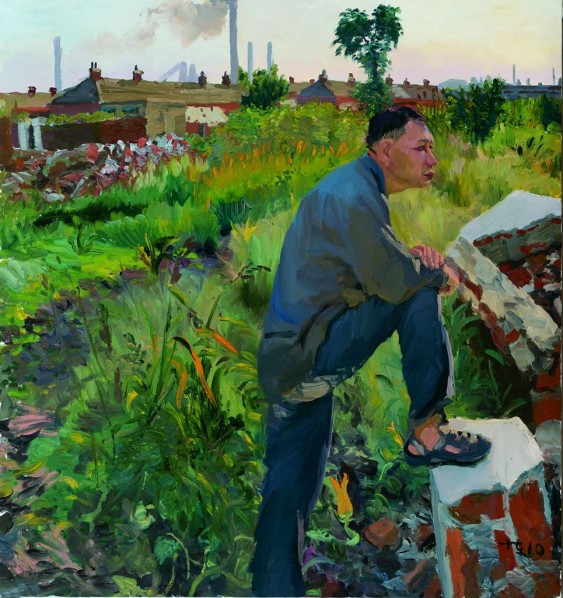
Liu Xiaodong-Han Shengzi Buys Land, 2010; oil on canvas, 150x140cm

Liu Xiaodong
Because of rapid urbanization, when we journey by train these days, we see fewer fields and endless stretches of multi-story buildings. We discover that cities all look the same that the people on the street are just lackeys or merchants, and the working class has been swept away. We discover that we’re all city people now: our hometowns have been invaded by high-rise buildings, making us city folk without a home. The friends I knew in childhood have gotten fat. I once painted their portraits because I was hoping to get into art school. Now, thirty years later, I am painting them again, hoping that I can finish their portraits before all of them are laid off.
Once upon a time we were hired farmhands, poor peasants, rich peasants and landlords. We were the proletariat, the working class, an army of workers and peasants. Now, we are making great strides, moving single-mindedly towards the future, becoming the propertied class—and we’ve got the bricks and cement to prove it.


